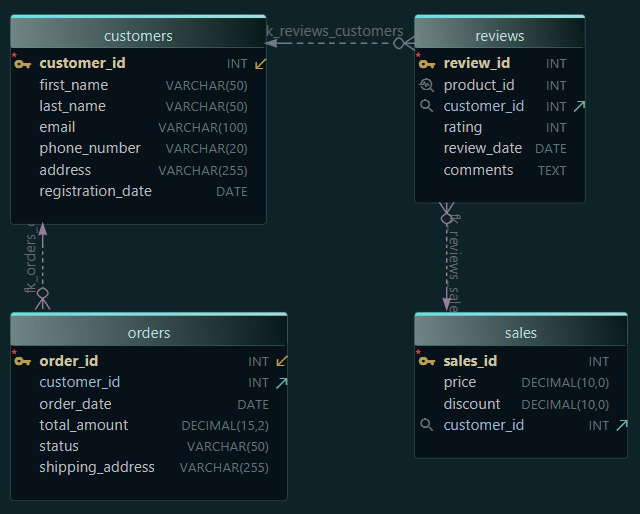MongoDB Schema Design Best Practices for 2026
MongoDB’s flexible document model makes it perfect for fast-moving projects, but without structure, it can quickly become complex and hard to maintain.
In this guide, you’ll learn how to design efficient MongoDB schemas in 2026, avoid common mistakes, and use DbSchema to visualize, document, and optimize your collections.
1. Design Around Your Queries
The first rule of MongoDB schema design: design for your queries, not just your data.
In relational databases, you model entities first and optimize queries later. In MongoDB, you should do the opposite - start by asking:
- Which queries will run most frequently?
- Which fields will be used in filters or joins (
$lookup)? - What documents should stay together for faster reads?
If most queries fetch related data together, consider embedding. If data grows independently or has many-to-many relations, use references.

Tip: Use DbSchema’s MongoDB Diagram View to visualize how documents connect. You can model embedded documents or reference relationships visually, before writing any JSON.
2. When to Use Embedded Documents
Embedding keeps related data in a single document, improving read performance and simplifying data retrieval.
Example:
-
connectivity is an embedded object inside the devices collection.
-
It contains fields like wifi, ethernet, and another nested embedded document bluetooth.
-
bluetooth itself has subfields such as supported and version.
{
"connectivity": {
"wifi": true,
"ethernet": false,
"bluetooth": {
"supported": true,
"version": "5.3"
}
}
}
Visual representation for this collection:

This structure avoids extra lookups and is perfect for data that’s tightly coupled.
When to Embed:
- The embedded array remains small.
- You always fetch both parent and child data together.
- Updates affect only a few subdocuments.
3. When to Use References
When subdocuments grow large or are shared across collections, references are safer.
Example:
// reviews collection
{
"_id": ObjectId("67102d8e1f23b45c9a003001"),
"user_id": ObjectId("67102d8e1f23b45c9a002001"),
"movie_id": ObjectId("67102d8e1f23b45c9a001001"),
"rating": 5,
"comment": "Brilliant concept and visuals!",
"created_at": ISODate("2025-10-16T09:00:00Z")
}

Explanation:
-
movie_idin reviews points to_idin movie. -
This allows you to join (via $lookup) or retrieve reviews per movie.
-
It’s a one-to-many relationship: one movie → many reviews.
This avoids hitting MongoDB’s 16MB document limit and keeps updates more efficient.
Tip: In DbSchema, you can create virtual foreign keys between collections - a visual way to understand relationships, even though MongoDB doesn’t enforce them natively.
4. Avoid Deeply Nested Structures
Nesting is powerful, but too much nesting makes queries complicated and updates slow. Documents larger than one or two levels of nesting often indicate that data should be refactored or referenced.
Keep nesting readable and practical - not more than what your aggregation pipeline can handle easily.
5. Index Strategically
Indexes can make or break MongoDB performance. Avoid creating too many - each index consumes memory and slows writes, but ensure your queries use the right ones.
Common best practices:
- Index fields that appear in
$match,$sort, or$lookup. - Avoid regex prefixes or dynamic field names in indexed fields.
- Monitor index usage with
db.collection.getIndexes()anddb.collection.stats().

Tip: Use the SQL/Query Editor to test performance and visualize query results instantly. You can identify slow queries before deploying changes.
6. Design for Schema Evolution
MongoDB doesn’t require a fixed schema, but teams should still keep their structures consistent. Inconsistent field names or missing attributes can break analytics, exports, or APIs.
Best practices:
- Define validation rules (
$jsonSchema) for each collection. - Use default values for optional fields.
- Document new fields before pushing to production.

Tip: DbSchema compares MongoDB schemas across environments (Dev, Test, Prod) and highlights new fields or missing attributes, helping you track schema evolution visually.
7. Don’t Forget Documentation
As your collections grow, documentation becomes essential, especially in teams.
- Record what each field represents.
- Keep track of embedded structures and data types.
- Share schema diagrams with developers and analysts.

and comments
DbSchema Advantage: Generate interactive HTML5 documentation directly from your MongoDB model. It includes diagrams, field descriptions, and metadata - ideal for sharing in teams or publishing internally.
8. Common Mistakes to Avoid
- Using unbounded arrays (they can exceed the document size limit).
- Changing field types dynamically (for example, from string to object).
- Ignoring indexes until the project slows down.
- Treating MongoDB like a relational database.
- Having no schema validation or documentation at all.
9. Bringing It All Together with DbSchema
DbSchema bridges the gap between MongoDB’s flexibility and traditional data modeling discipline. With it, you can:
- Design and visualize complex MongoDB structures.
- Manage relationships with virtual foreign keys.
- Compare and synchronize schema changes.
- Document your collections in interactive HTML5 format.
- Collaborate through Git for version control.
Conclusion
In 2026, MongoDB remains one of the most versatile databases, but structure, visualization, and documentation are the keys to long-term success. With DbSchema, you get a clear picture of your schema, better team collaboration, and documentation that evolves with your data.
Download DbSchema for free and start modeling your MongoDB collections visually today.







